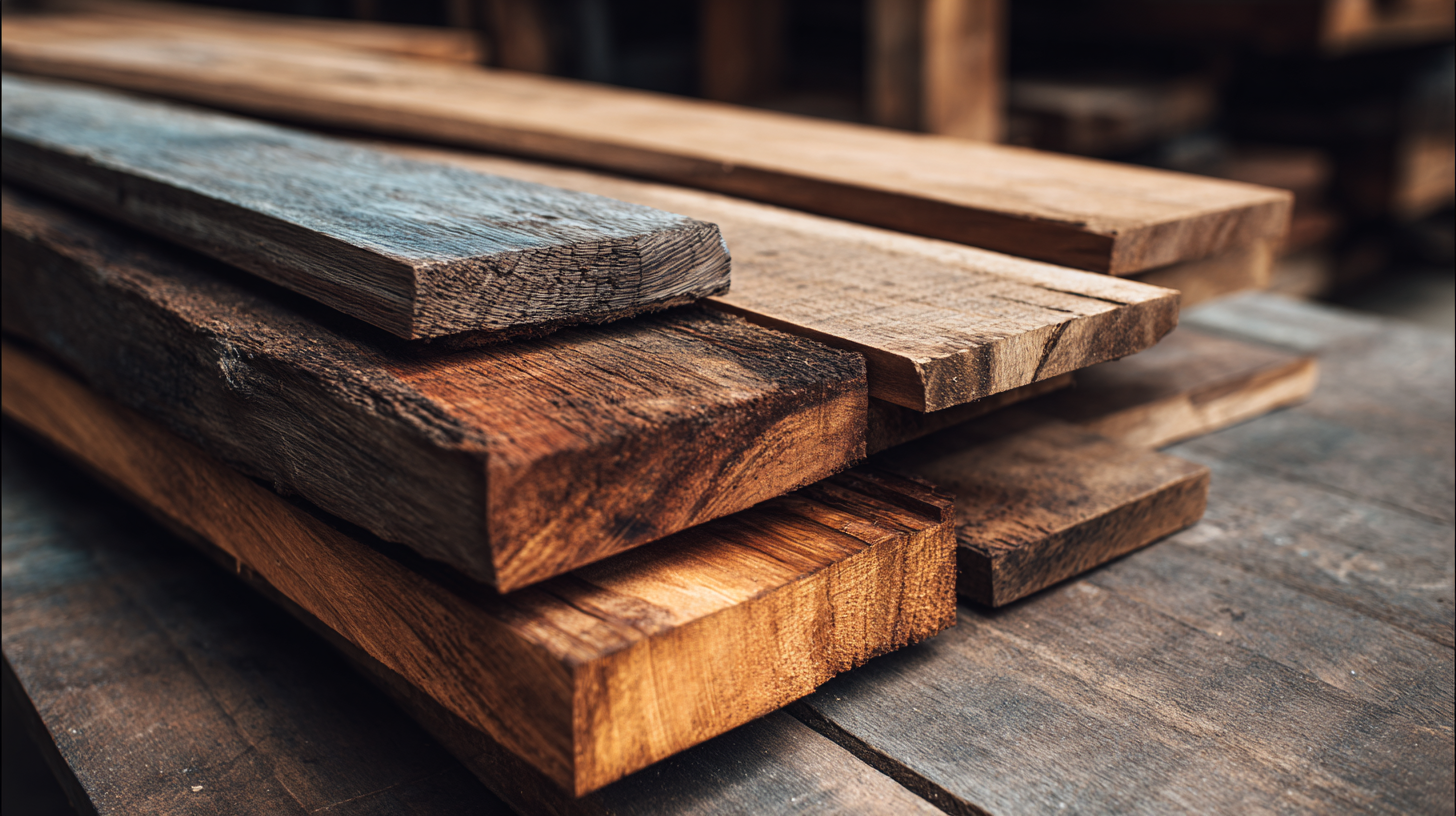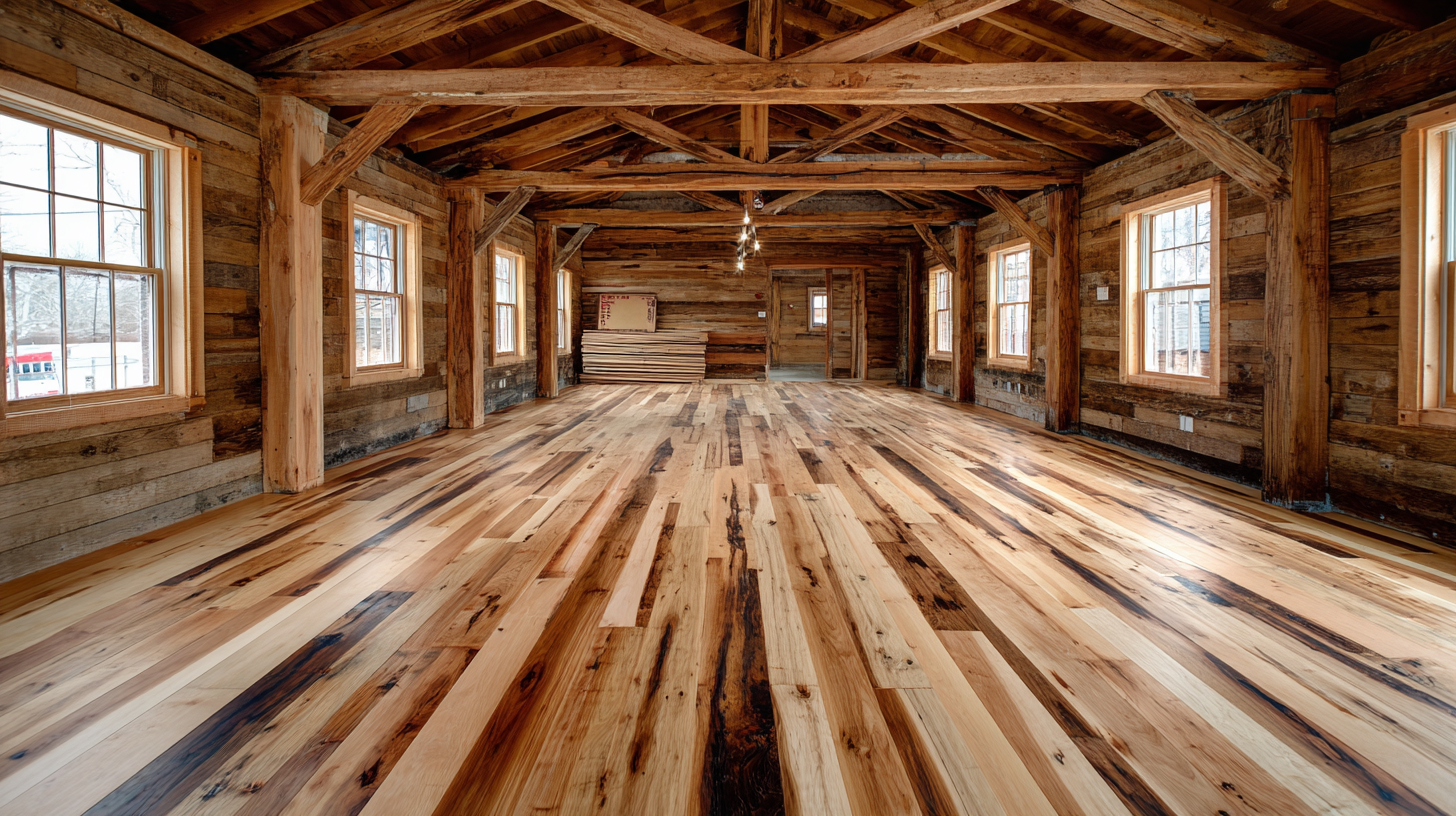Leave Your Message
-
Whatsapp
-
Whatsapp
When embarking on your next construction or renovation project, the choice of flooring lumber is paramount to achieving both aesthetic appeal and structural integrity. As the industry evolves, understanding the trends that shape flooring lumber selection becomes essential. This blog delves into the key factors that define the best flooring lumber, exploring advancements in technology and materials that influence its performance and sustainability. From the types of wood available to the latest innovations in treatment methods, we'll examine how these elements impact not only the look of your space but also its durability and environmental footprint. Join us as we navigate the landscape of flooring lumber, empowering you to make informed decisions that will define the success of your project in the years to come.

 When selecting the best flooring lumber for your next project, the choice of wood species is crucial. Here are the top five lumber types that stand out for flooring: Oak, Maple, Cherry, Hickory, and Walnut. Each of these options offers unique characteristics, such as durability, grain patterns, and color variations, making them suitable for different styles and preferences.
When selecting the best flooring lumber for your next project, the choice of wood species is crucial. Here are the top five lumber types that stand out for flooring: Oak, Maple, Cherry, Hickory, and Walnut. Each of these options offers unique characteristics, such as durability, grain patterns, and color variations, making them suitable for different styles and preferences.
Tips for Choosing Flooring Lumber:
When it comes to choosing flooring lumber for your next project, understanding lumber grades is crucial in ensuring durability and longevity. Lumber grades are determined by the quality of the wood and its structural integrity. Higher grades, such as Select and #1 Common, typically feature fewer defects like knots or splits, which can greatly affect the flooring's appearance and performance. These grades are ideal for high-traffic areas, where the floor must withstand more wear and tear.
Conversely, lower grades like #2 Common might be more cost-effective, but they often come with more imperfections that can lead to problems over time. These floors might not hold up as well in terms of scratches and dents, particularly in bustling households. It’s essential to assess your project's specific needs—considering factors such as foot traffic, , and climate conditions—before making a selection. Ultimately, the right lumber grade will ensure your flooring not only looks great but also stands the test of time.
When it comes to enhancing lumber flooring, the finishing technique you choose can profoundly impact both aesthetics and durability. One popular method is oil finishing, which penetrates deep into the wood fibers, providing a natural look while enhancing the grain. This technique not only enriches the color of the wood but also protects it from moisture and wear, making it ideal for areas with high foot traffic.

Another effective method is water-based polyurethane, known for its quick drying time and low toxicity. This finish creates a durable, protective layer on the surface, which resists scratches and stains. It’s perfect for homeowners who prioritize a clear, glossy look while ensuring their flooring remains easy to maintain. However, applying multiple thin coats is crucial to achieving the best results, as this method can highlight imperfections if not executed properly.
Lastly, there’s the option of hardwax oil, which offers a unique balance of durability and a matte finish. Combining the benefits of both oil and wax, this technique provides a protective layer that enhances wooden flooring while allowing it to breathe. This makes it an excellent choice for eco-conscious homeowners, as it is often made from natural ingredients. Each of these finishing techniques has its advantages, allowing you to choose the best one that aligns with your design vision and lifestyle needs.
Choosing sustainable lumber for your flooring project is crucial for minimizing environmental impact while also enhancing the aesthetic and functional qualities of your space. When selecting lumber, it's important to consider certifications like FSC (Forest Stewardship Council) or PEFC (Program for the Endorsement of Forest Certification), which ensure that the wood is sourced from responsibly managed forests. Using such certified products not only supports sustainable forestry practices but also promotes biodiversity and protects ecosystems.
Additionally, exploring reclaimed wood is an excellent way to incorporate sustainability into your project. Reclaimed lumber is salvaged from old buildings, barns, or other structures, allowing you to give new life to materials that would otherwise contribute to landfill waste. This not only reduces the demand for new timber but also offers unique character and history to your flooring. By prioritizing environmentally friendly options and materials with a lower carbon footprint, you contribute to a healthier planet while achieving a stunning look for your home or business.
When selecting flooring lumber for your next project, weighing cost against quality is essential. According to the National Wood Flooring Association, quality lumber can enhance the durability and aesthetic appeal of your floors, potentially increasing the home’s value. However, it's crucial to assess your budget alongside the quality you desire. For instance, oak and maple are among the most sought-after options, with oak averaging between $3 to $8 per square foot, while maple can range from $5 to $10. By understanding these price points, you can make informed decisions that balance quality and affordability.
Tips: Consider purchasing reclaimed wood as a cost-effective way to obtain high-quality lumber while contributing to environmental sustainability. Additionally, always ask for product certifications, such as FSC (Forest Stewardship Council), to ensure that the lumber sourced is both ethical and of excellent quality.
Another factor to evaluate is the wood’s density, which directly influences its resilience and wear resistance. Hardwoods like hickory and ash offer greater durability, making them suitable for high-traffic areas. Remember that investing in higher-quality materials now can save you from costly repairs or replacements down the line, ultimately providing a better return on your investment.
